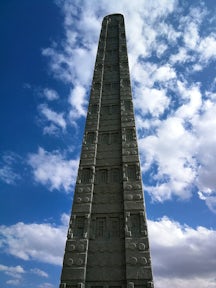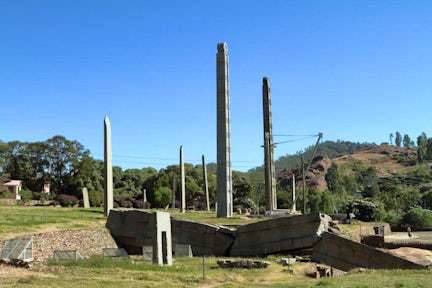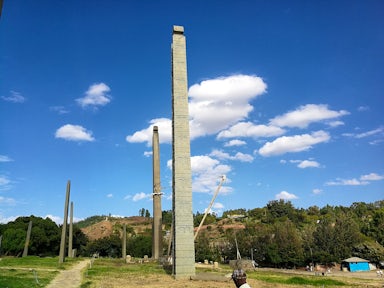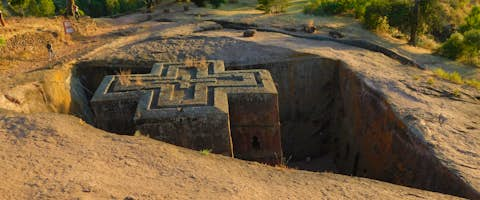The Obelisks of Axum
Formerly the heart of the Axumite empire that spanned for nearly one thousand years, Axum is home to a 24-metre megalith surrounded by a ring of smaller Obelisks.
Built in the 4th century by King Ezana, the 160 tonne monument had stood in place for over a thousand years, until the colonial aspirations of a nation far from Ethiopia arrived at her borders.
The Italian occupation of Ethiopia is considered by many a period of hardship within the country, with many long hidden artefacts and national treasures being stolen by the occupiers, and despite its mammoth measurements, the Monolith of Axum was taken from Ethiopians in the 1930s.
Found, semi-submerged in a pit by a group of Italian soldiers in 1935, the Obelisk was removed from its home, partially dismantled, and after over two years in limbo, was transported to Rome as a spoil of war.
It was re-erected in Portal Capena square, in front of the Ministry for Italian Relations in Africa, a somewhat ironic end to this stolen spoil of war.

Towering stelae in Axum.
For nearly 90 years it stayed in Rome, and despite a UN ruling in 1947, as well as multiple talks of its return over the years, the lack of funding and technical challenges involved in its repatriation meant very little could be done without Italian cooperation.
King Ezana's Obelisk remained imprisoned in Rome until 2008. However on the 4th September, 1700 years after the granite Obelisk was first erected, and 70 years after it was stolen, it was repatriated to widespread praise across Ethiopia.
The return of the Monolith set the precedent for the return of other stolen sacred artefacts, mainly looted by British troops.

Stelae fields in Axum.
Now back in home, towering over the smaller Obelisks that encircle it, this graphite monolith is one of Axum’s key attractions.
The obelisk features two ornamented false doors, with layers of varying designs and decorating slithering up the tower, around rows of false windows, to the semi-circular domed top.
The detailing on these decorations is so precise that the windows and doors all have locks carved into them, and every inch on the Stelae shows levels of artistry and craftsmanship not seen for many years after its construction.
The graphite used in the construction is believed to have come from a quarry several miles south of the city, and the level of organization and infrastructure needed to facilitate a project of this calibre demonstrates a level of social organization and technology previously thought impossible for the time.

Ancient stelae looming over Axum.
Visit Axum on these trips
Ready to plan your Ethiopia adventure?
Listen
We'll spend some time listening to your aspirations, then discuss the kind of experience that might suit you.
Match
Next we'll discuss the options, shortlist the best trips for you and present you our impartial recommendations.
Reserve
We'll place a 24 hour hold on your preferred option - without obligation - whilst we talk through the details.
Whatever your budget, group size, length of stay, preferred activity or appetite for adventure, we can help.
+1 315 645 2889








